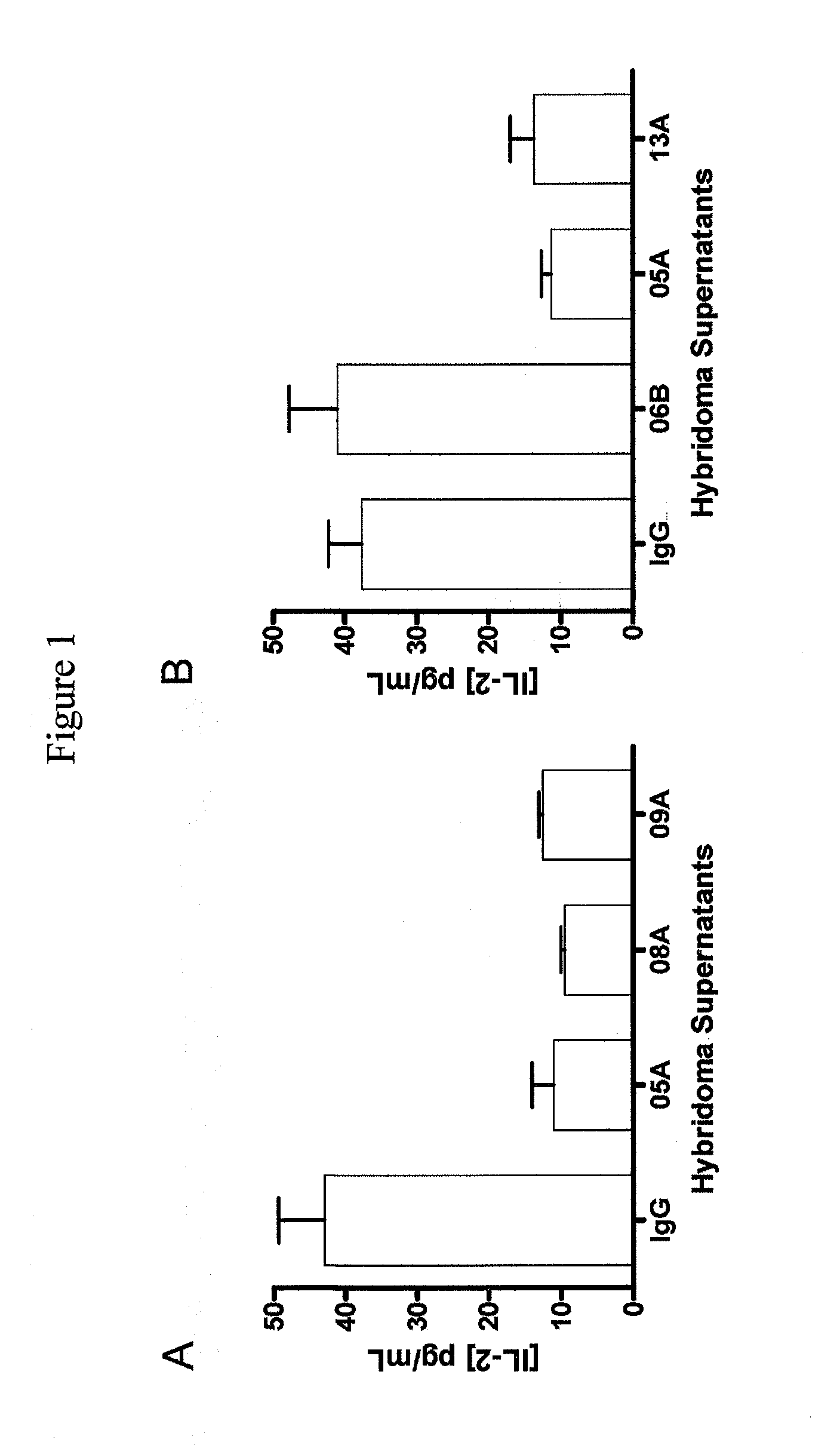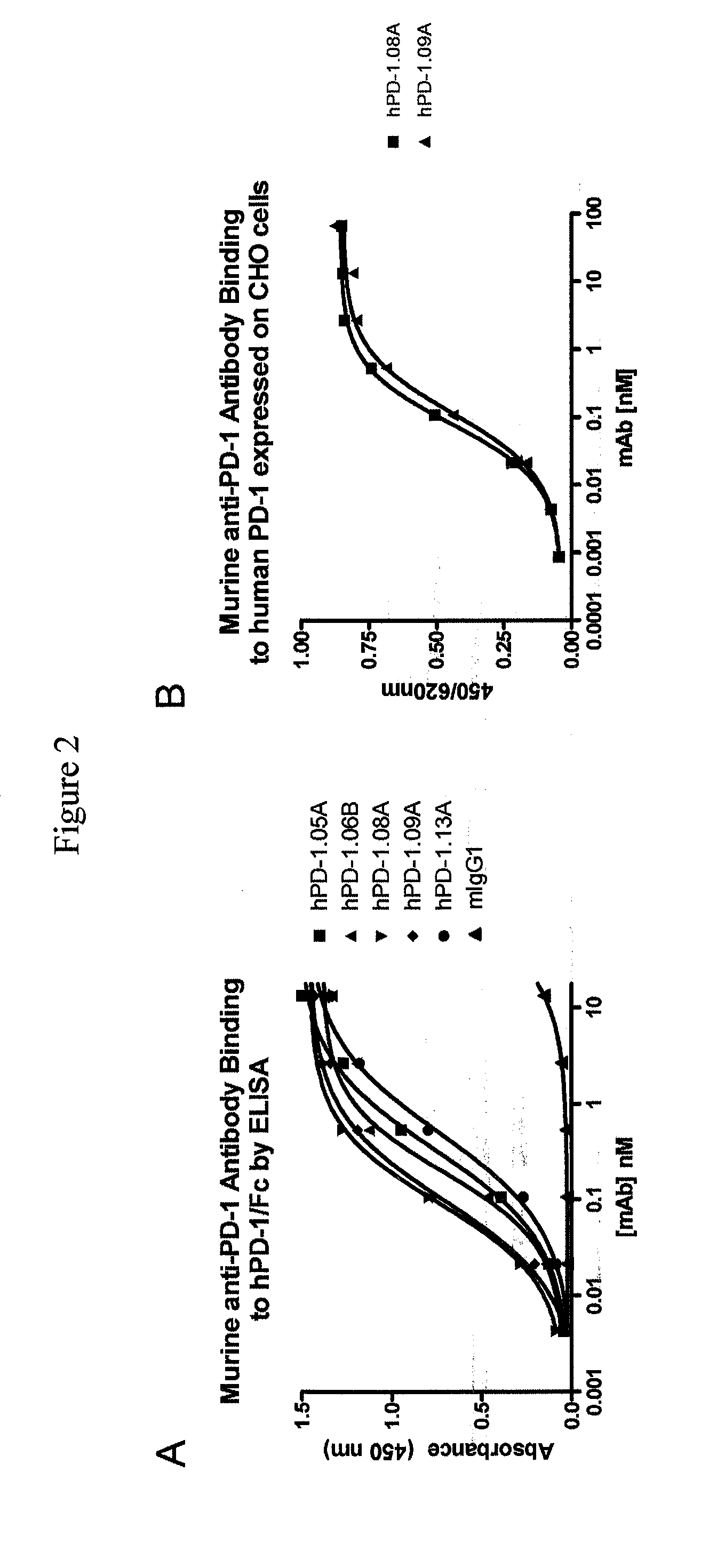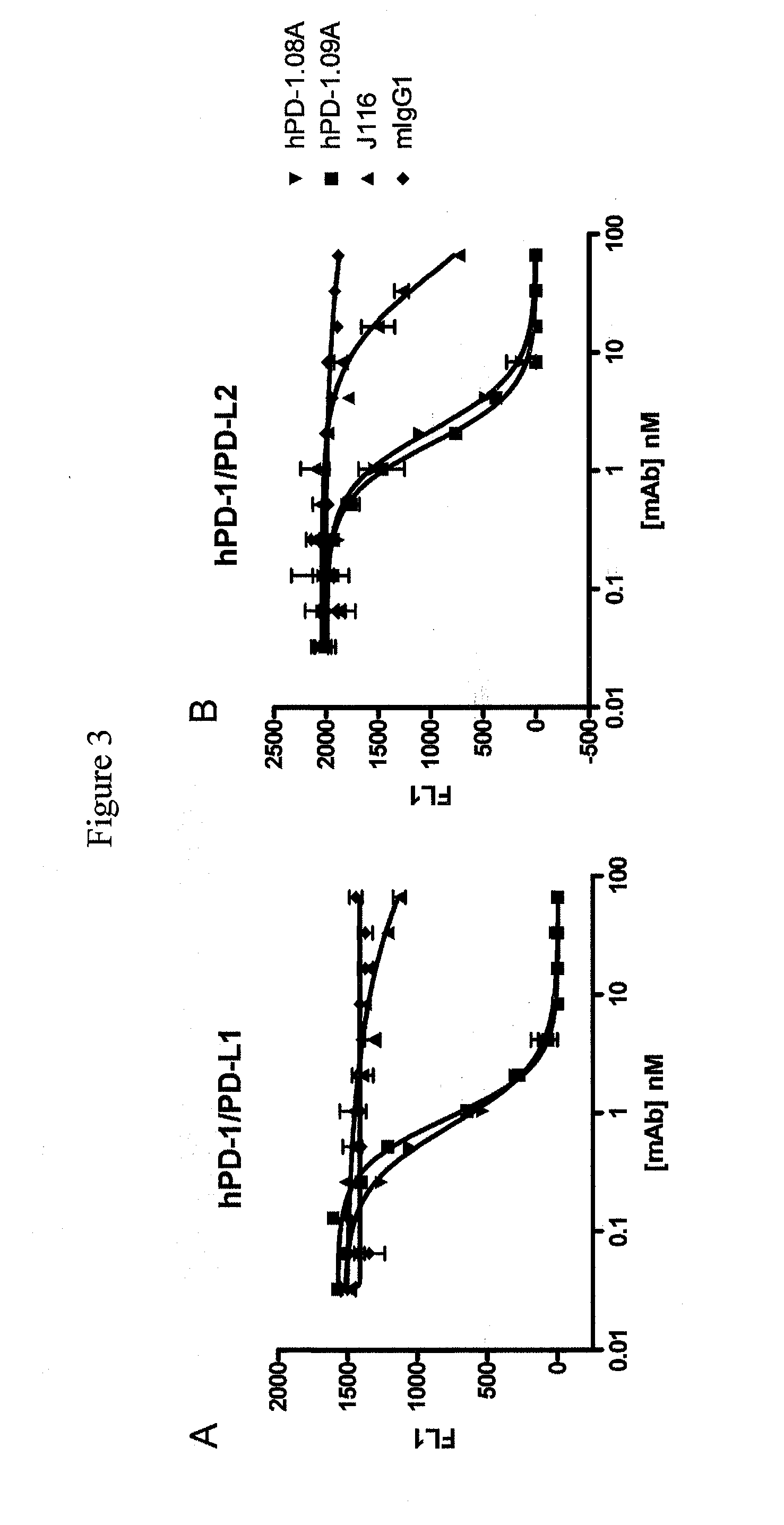Antibodies to human programmed death receptor pd-1
a technology of human programmed death receptor and antibodies, which is applied in the field of immunoinhibitory receptors to achieve the effects of increasing tumor antigen release, reducing tumor antigen release, and facilitating initial clinical respons
- Summary
- Abstract
- Description
- Claims
- Application Information
AI Technical Summary
Benefits of technology
Problems solved by technology
Method used
Image
Examples
example 1
Immunization and Selection of Anti PD-1 Antibodies
[0184]Immunization of Mice with hPD-1 cDNA
[0185]To generate antibodies against the human PD-1 ('hPD-1′) receptor, a cDNA encoding the open reading frame of the hPD-1 receptor was obtained by PCR and subcloned into vector pcDNA3.1 (Invitrogen, Carlsbad, Calif.). Next, CHO-K1 cells were stably transfected with hPD-1, and expression was monitored using flow cytometry. CHO-K1 clones were isolated expressing human PD-1 on their membranes and named CHO-hPD1.
[0186]Mice were immunized by gene gun immunization using a Helios gene gun (BioRad) and DNA coated gold bullets (BioRad) following manufacturers instructions. Briefly, 1 μm gold particles were coated with hPD-1 cDNA (cloned into pcDNA3.1) and, where indicated, commercial expression vectors for mouse Flt3L and mouse GM-CSF in a 2:1:1 ratio (both from Aldevron, Fargo N. Dak.). A total of 1 μg of plasmid DNA was used to coat 500 μg of gold bullets.
[0187]Specifically, 7-8 week-old female BA...
example 2
Purification and Characterization of Murine Anti-PD-1 Antibodies
Stabilization of Anti-PD-1 Producing Hybridomas and Purification of Anti-PD-1 Antibodies
[0192]Clonal cell populations were obtained for each of the hybridomas by subjecting them to multiple rounds (>4) of limiting dilution. Stable hybridoma cells were then cultured under serum-free conditions using CELLine bioreactors (Integra-biosciences) for six to eight days. Cells were seeded in the inner chamber in serum-free media at a density of 3×106 c / mL in 15 mL and expanded to approximately 4×107 c / mL over eight days. The outer chamber was filled with media supplemented with up to 10% BCS (bovine calf serum). On day six to eight, the inner chamber culture was harvested, washed with 15 mL SF media and re-innoculated with hybridoma cells. Bioreactor supernatant and wash were combined and clarified by centrifugation. The resulting supernatant was filtered through a 0.22 μM filter membrane. For antibody purification, supernatants...
example 3
Functional Profiling of Anti-PD-1 Antibodies
[0204]Human T Cell Response to SEB is Enhanced by hPD-1.08A and hPD-1.09A
[0205]Anti-PD-1 antibodies were tested for their capacity to enhance T cell activity in vitro using blood cells from healthy volunteers. One assay used to characterize the functional consequence of blocking human PD-1 receptor utilized Staphylococcus enterotoxin B (SEB) to engage and activate all T cells expressing the Vβ3 and Vβ8 T cell receptor chain. Healthy human donor blood was obtained and diluted 1:10 into culture medium. Diluted whole blood was plated (150 μl per well) in 96-well round-bottom plates and pre-incubated for 30-60 min with mAb and varying concentrations. SEB was then added at various concentrations ranging from 10 ng / mL to 10 μg / mL. Supernatants were collected after 2 to 4 days of culture and the amount of IL-2 produced was quantified using ELISA (described in Example 1) or using standard multiplex technology (Luminex platform—Biosource cytokine d...
PUM
 Login to View More
Login to View More Abstract
Description
Claims
Application Information
 Login to View More
Login to View More - R&D
- Intellectual Property
- Life Sciences
- Materials
- Tech Scout
- Unparalleled Data Quality
- Higher Quality Content
- 60% Fewer Hallucinations
Browse by: Latest US Patents, China's latest patents, Technical Efficacy Thesaurus, Application Domain, Technology Topic, Popular Technical Reports.
© 2025 PatSnap. All rights reserved.Legal|Privacy policy|Modern Slavery Act Transparency Statement|Sitemap|About US| Contact US: help@patsnap.com



